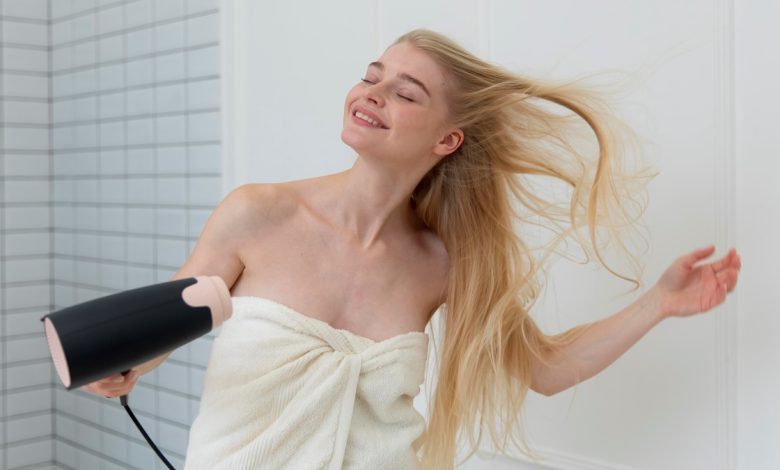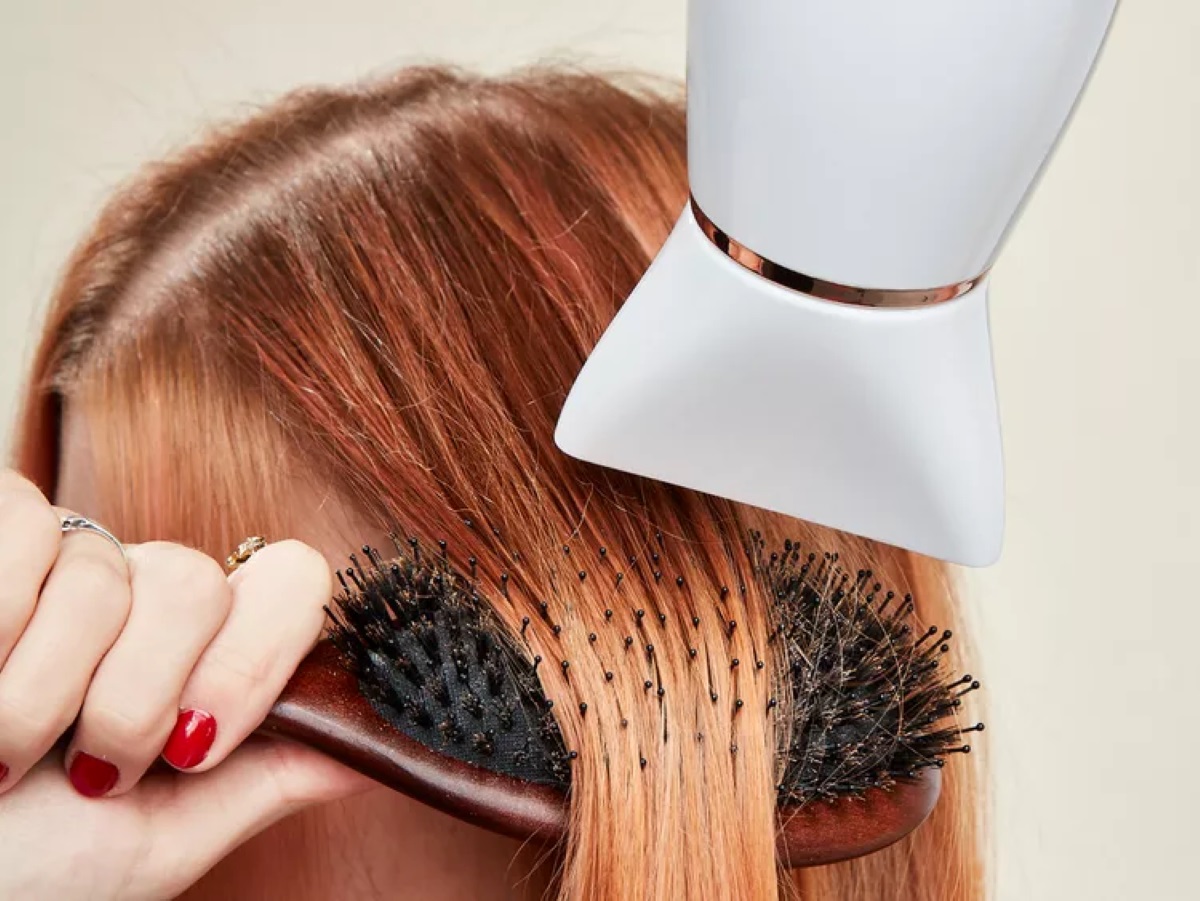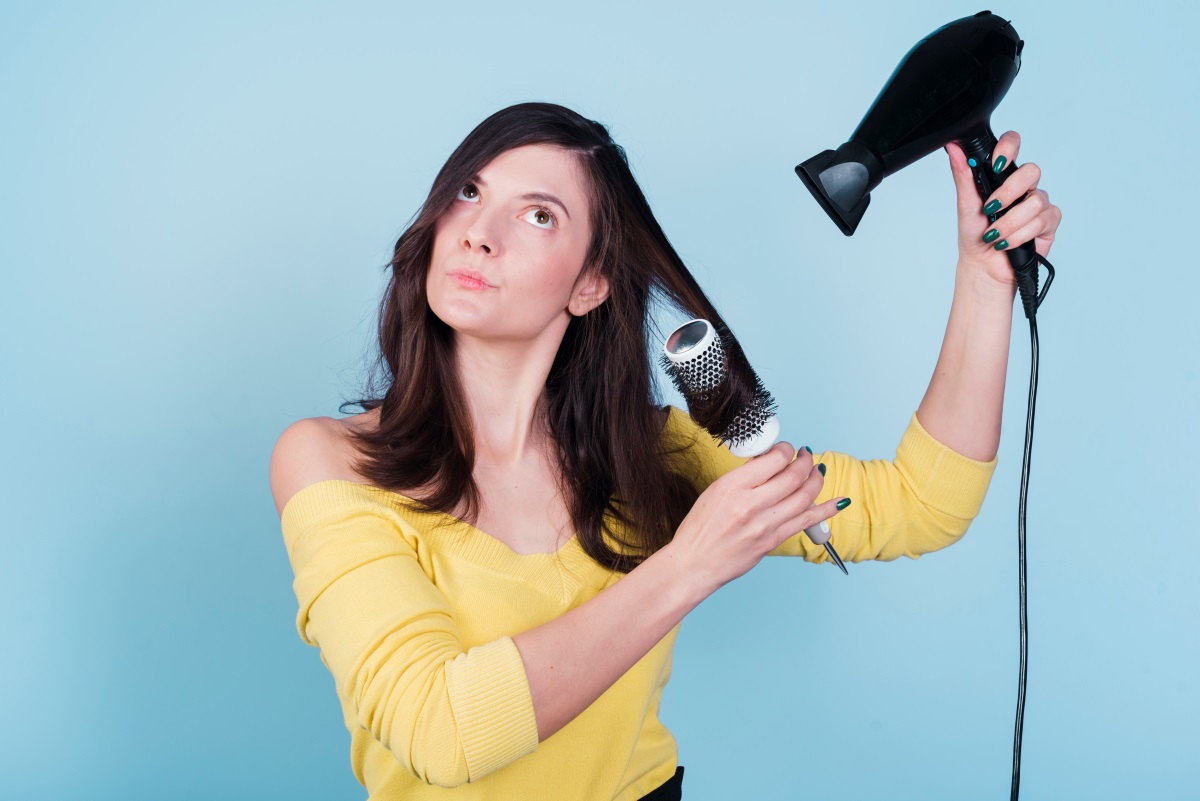The best way to dry hair: How To Dry Your Hair Without Damaging It!

The best way to dry hair: Towel-drying, air-drying, and blow-drying wet hair each come with unique perks, but there’s one thing they all have in common: The potential to cause damage when approached incorrectly. As pro hairstylist Gabi Lopez explains, “hair is in its most fragile state when wet.”
The best way to dry hair:
While there are no right or wrong methods for drying your hair (your choice will depend on factors including your hair type and your styling goals), there are ways to optimize your technique—and we asked Lopez and professional hairstylist Raven Hurtado to share them. Keep reading for a full breakdown of how to towel dry, air dry, and blow dry hair properly.
Stay with this section of makeup and beauty in the health and beauty section of Eternal Pen magazine.

Towel-Drying Techniques
The best way to dry hair: Towel drying is a great option for hair types that lean on the dry side or don’t retain moisture for long, perhaps due to having a finer density or an existing color treatment. Towel drying is also a preferred method for those who need help getting their hair dry in a shorter window of time. So, how does one approach towel drying correctly?
Squeeze, Don’t Rub
The best way to dry hair: “You want to gently squeeze out the excess water instead of rubbing vigorously,” says Hurtado. “If you rub the hair, it can cause [it] to break or get pulled out.” Our hair, no matter its shape, length, or density, “is in its most vulnerable and fragile state when it’s wet,” re-emphasizes Lopez.
Choose Absorbent Materials
The best way to dry hair: Using whatever bath towel that’s available could be the cause of lingering frizz. Instead, have a dedicated hair towel made with an absorbent material, like microfibers. “The benefit of using a microfiber towel instead of a regular towel is [that it will] absorb water more quickly,” Hurtado says, noting that these materials can work especially well for thicker hair types that tend to retain more moisture.
If your hair doesn’t retain as much moisture, cotton t-shirts will also safely absorb the excess. “T-shirts have a flat surface,” Hurtado points out, and that lack of added texture against your strands “won’t rough up the hair.”

Air-Drying Techniques
The best way to dry hair: Air drying may be your method of choice if you know your hair needs a break from heat styling or other interventions. It could also be a necessity based on the demands of your time. And while it might seem difficult to get the lowest maintenance drying option “wrong,” there are things you can do to give your hair a better chance of air drying both efficiently and effectively.
Shake It Out
The best way to dry hair: Giving your hair a quick shake can go a long way when air drying, especially before and after applying styling products that accentuate your hair type. “Shaking the hair out allows air to get through, and that ventilation throughout the hair prompts faster drying,” Hurtado explains. (As a mom to two young children and someone who has thick, wavy hair, the shake-out method—which I do by flipping my head upside down a couple of times—is my personal favorite.)
Hurtado points out that using a heat protectant here can still prevent breakage and provide a soft, nourishing finish to air-dried hair.
Use a Wide-Tooth Comb
The best way to dry hair: “Wide-toothed combs are a great option because they don’t cause too much strain on wet, fragile hair,” says Lopez. Similar to the shake-out technique, a wide-tooth comb helps with ventilation. “By using a wide-tooth comb, hair dries faster,” says Hurtado. “This is because the wide-spaced teeth of your comb allow air to flow through.” If your preference is to air dry, but you still have some tangles to get through, this is the approach to take. Extra fine hair that’s high in volume (meaning, there’s a lot of it) might even need to consider using a leave-in detangler spray before combing through.
Blow-Drying Techniques
The best way to dry hair: With heat involved, it’s no surprise that blow-drying techniques require caution and care. Heat can be a source of serious damage to the hair, especially with prolonged use or high or frequent exposure. But the benefits of a good blowout are hard to refuse, and when done correctly, offer a desired hairstyle and appearance that could last for up to a week.
Before we dive into specific techniques that will help you maintain good hair health with this approach, Lopez walks us through the five basic steps to take for a healthy blow dry.
The best way to dry hair:
1.Begin with semi-dry hair: Use one of the above techniques to get your hair 60-70 percent dry. “[This] will significantly reduce the… heat needed to dry the hair,” she explains. “Less time equals less heat and damage.”
2. Detangle and protect: Lopez suggests using a detangler or heat protectant. “Paddle brushes are also designed for detangling.”
3.Apply styling products: “Use products that coincide with your end goal,” she tells us; think curl cream or volumizing mousse. “Choosing the right products can help you eliminate the need for styling irons after blow drying,” she adds.
4. Section the hair: To perform an efficient blow dry, work in sections the same size as your brush to avoid tangling.
5. Grab your tools: Lopez recommends using a blow dryer with negative ion technology, your preferred dryer attachment (nozzle, comb, or diffuser), and the brush of your choice.








